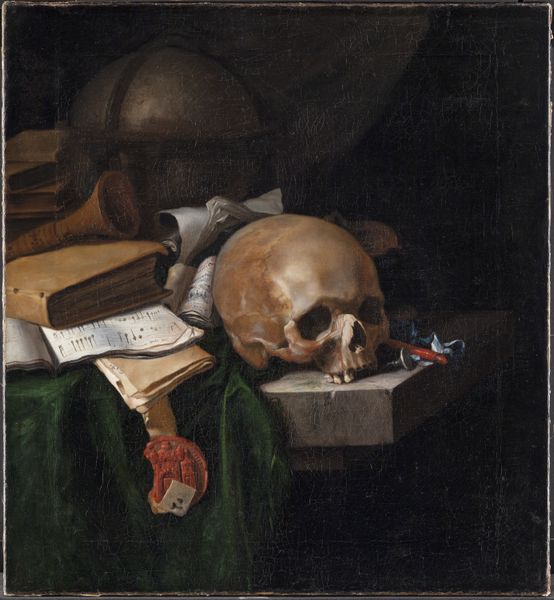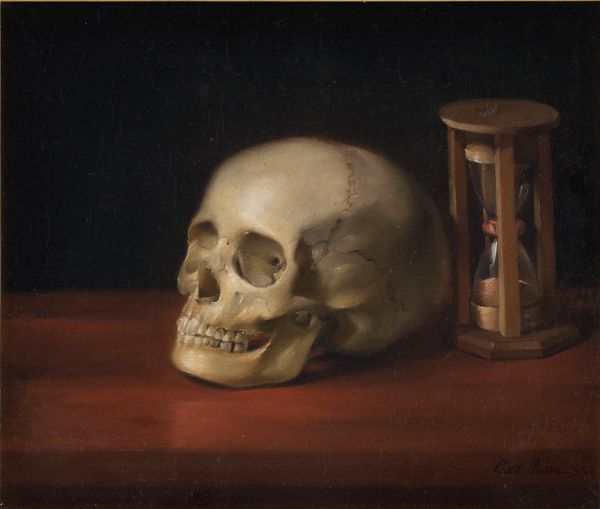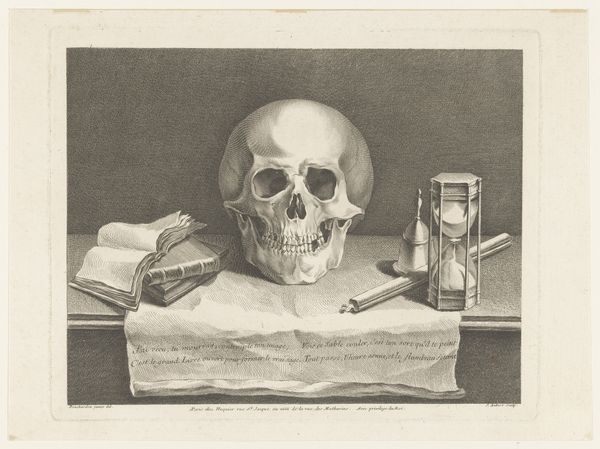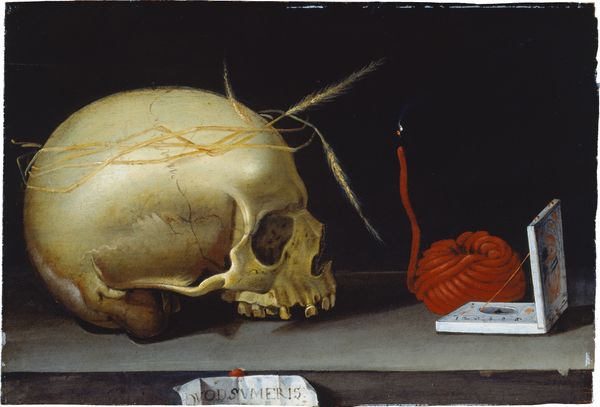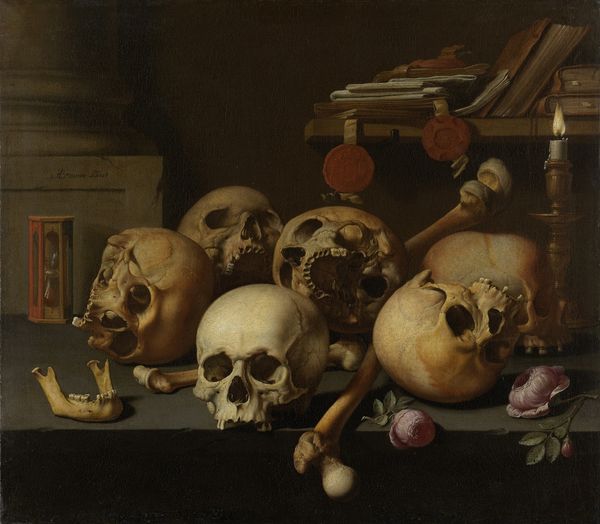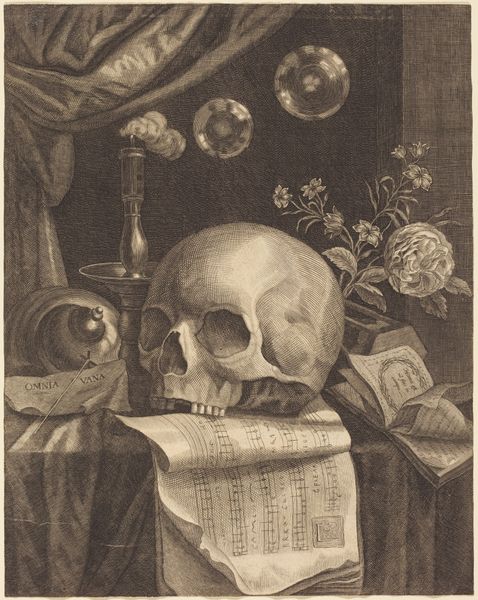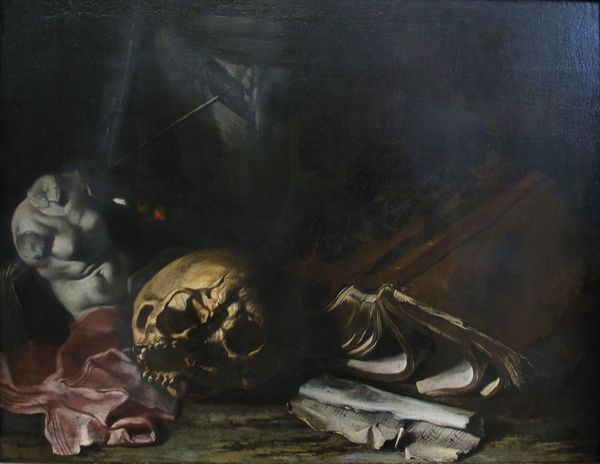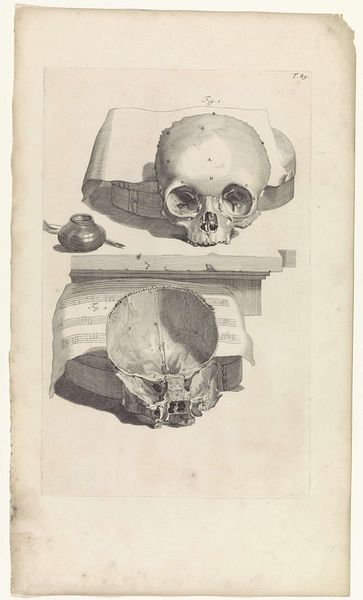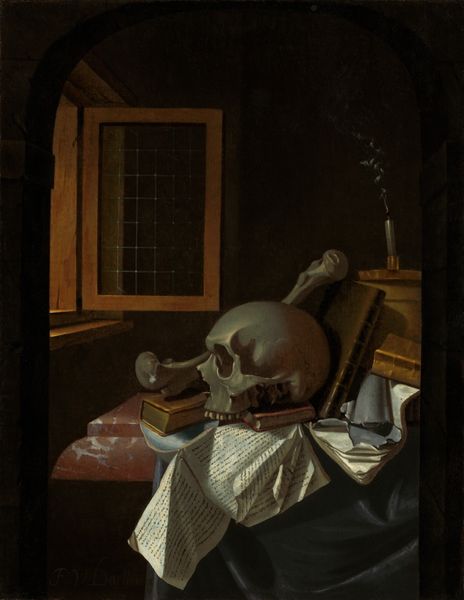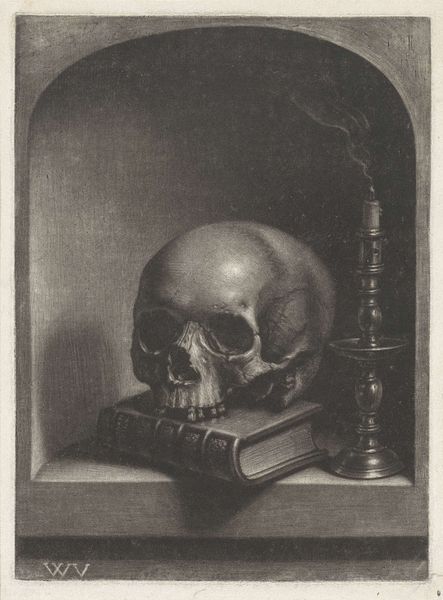
oil-paint
#
baroque
#
dutch-golden-age
#
oil-paint
#
oil painting
#
vanitas
Dimensions: 24.1 x 35.9 cm
Copyright: Public domain
Pieter Claesz created this still life, featuring a skull and writing quill, during the Dutch Golden Age. The symbols presented here—the skull, the guttering candle, and the overturned glass—belong to a visual language known as “vanitas,” a style of painting that flourished in the Netherlands during the seventeenth century. Vanitas paintings served as moralizing allegories. They were intended to remind viewers of the transience of life and the futility of worldly pursuits. Claesz’s painting can be read as a critique of the cultural and intellectual life of his time. The quill represents knowledge and learning, but its presence alongside the skull suggests that even these pursuits are ultimately meaningless in the face of death. In a rapidly changing society, such paintings offered viewers a stern reminder of traditional values. As art historians, we use the social and institutional contexts to understand the significance of this painting. By researching the cultural meanings of objects like skulls and quills, we gain insight into the values and beliefs of the society that produced them.
Comments
No comments
Be the first to comment and join the conversation on the ultimate creative platform.

